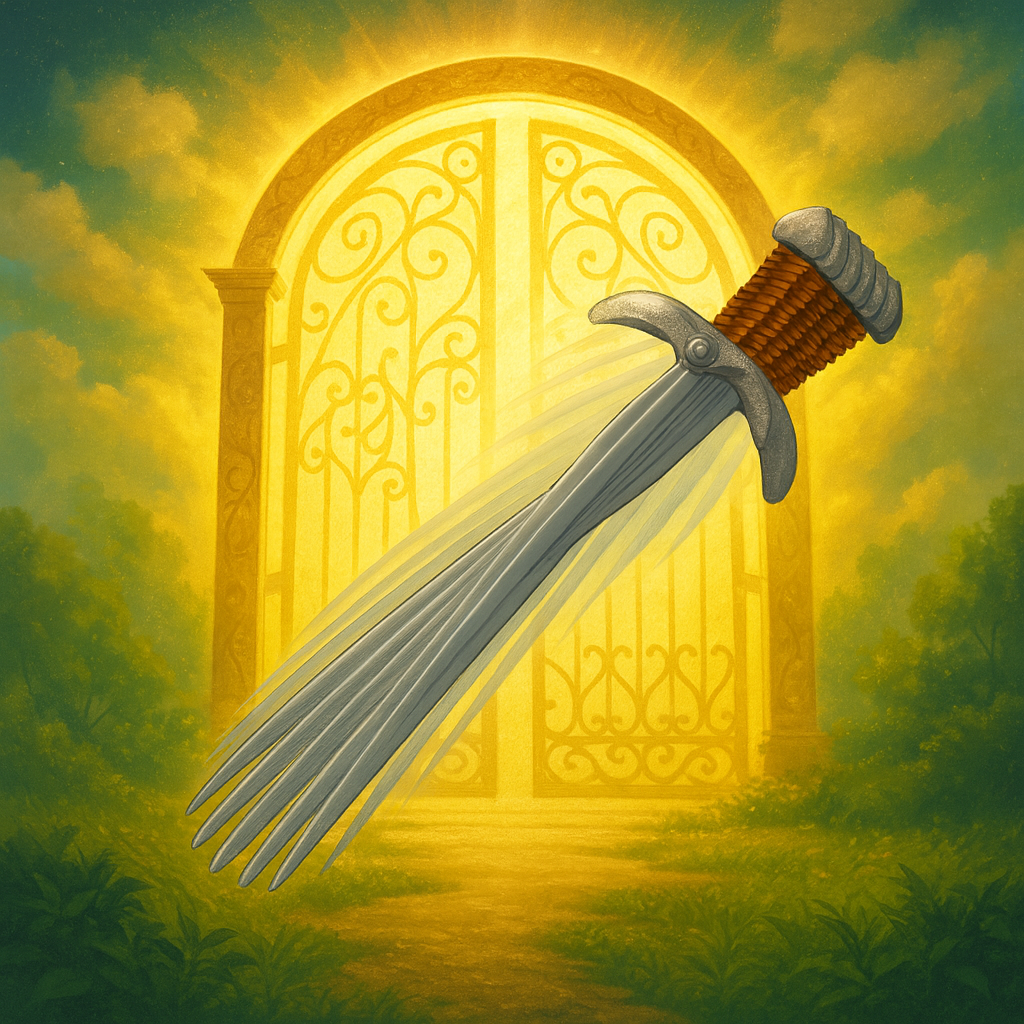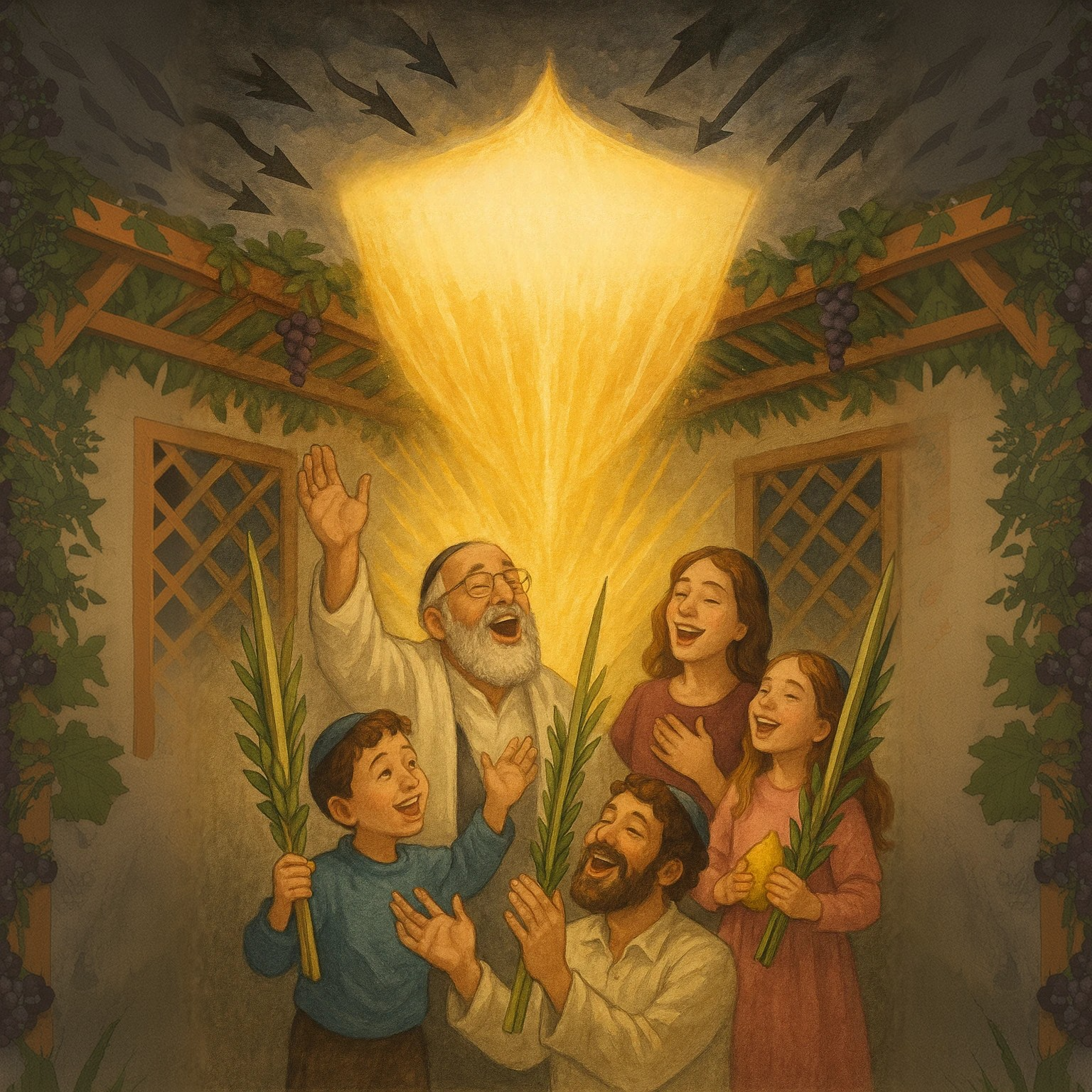BH
The Generation of the Flood
Parshat Noach opens with one of the most catastrophic events in history — the flood that wiped out almost all of creation. The Torah reveals that the generation of the flood was punished for two main sins: chamas — theft and robbery — and hashchatah, moral corruption, specifically sexual immorality.
Rashi explains that while both were severe, it was theft that sealed their fate. The decree of destruction was finalized because of gezel, robbery. Yet the foundation of their downfall began with hishchit kol basar — the corruption of human and even animal behavior. Immorality spread so deeply that even animals crossed their natural boundaries, creating a world so distorted that it could no longer sustain holiness.
The Root of the Damage
At first glance, theft and immorality seem unrelated, but they both share a common root: the sin of exchange. Both involve taking something that does not belong to you — crossing boundaries that Hashem established.
A thief covets what another possesses — wealth, status, or pleasure — instead of appreciating his own portion. He exchanges his inner contentment for craving what lies beyond his reach. Likewise, sexual immorality is also an act of exchange. When a person seeks connection or pleasure outside the limits of holiness — another man’s wife, another species, or through forbidden acts — he swaps the true for the false, the permitted for the prohibited.
This is the essence of the Heichal HaTemurot, the Chamber of Exchanges, where holiness is stolen and misused. Hashem created man to find joy in his portion — “Who is rich? One who is happy with his lot.” But when sadness and dissatisfaction enter, a person begins to look elsewhere for fulfillment, and that search itself feeds the domain of the exchange.
Losing the Gift of Free Will
The Zohar and Kabbalistic writings explain that the people of the flood generation corrupted themselves so completely that there was no point of return. They exchanged so much good for evil that their spiritual sensitivity — their very capacity for repentance — was destroyed.
The Gemara (Shabbat 105b) describes how the yetzer hara works gradually: first it suggests something small, then something greater, until it leads a person to idolatry. Tosafot ask, where is free will in this? The answer is chilling — a person can use his free will to destroy his own free will. When someone continually chooses corruption, his heart hardens, and the gate of return closes.
Pharaoh exemplified this. During the final plagues, Hashem Himself hardened Pharaoh’s heart. Why? Because Pharaoh had already chosen so much evil that he forfeited the ability to choose good. So too, the generation of the flood had gone beyond repair. Their only rectification was through destruction — the cleansing waters of the flood that purified the world.
The Flood as Measure for Measure
The Torah calls the Deluge a Mabul, which Rashi explains as balal et hakol—Hashem mixed and confused everything. This was measure for measure. Mankind had corrupted the natural order by exchanging and misappropriating what was not theirs—pleasures, possessions, and relationships. They blurred the holy boundaries that define truth, purity, and individuality. Therefore, Hashem blurred creation itself.
The waters of the flood boiled and raged, melting everything upon the earth. All structure dissolved—earth, mountains, cities, and every living creature—until the world returned to a state of chaos. Only the fish of the sea remained untouched, as they had not been corrupted. Hashem effectively brought the world back to tohu va’vohu, the initial earthly void, to restart creation through Noach.
This was not an act of cruelty but of rectification. The flood was not only punishment—it was purification. Hashem erased the world’s perversion to create the possibility of renewal.
Through the joy taught by the tzaddikim, and through the blasts of the shofar that stir the heart, we can repair the damage of the exchanges
Noach’s Test of Purity
Inside the ark, Noach and his family endured their own spiritual test. The Torah teaches that no human or animal aboard was permitted to engage in marital relations during the flood. For more than one hundred and fifty days, they restrained themselves completely. They accepted suffering and self-control to repair the very sin that caused the destruction.
Through this restraint, Noach’s generation-in-miniature rectified the blemish of immorality. When Hashem saw their purity, He remembered them—vayizkor Elokim et Noach—and caused the waters to subside.
After the flood, Noach feared that such devastation could return. Hashem therefore made a covenant never again to destroy all life by water. As a sign of this eternal promise, Hashem set the rainbow—the Keshet—in the sky.
The Covenant of the Rainbow
Hashem told Noach, “This is the sign of the covenant between Me and you and every living creature for all generations.” (Bereishit 9:12) The rainbow became a visible symbol of Divine mercy—Hashem’s remembrance of His oath not to obliterate the world, even when mankind sins.
Rashi notes that in the Torah text, the word l’dorot (“for generations”) is written missing two Vavs. This hints that not every generation requires the rainbow’s reminder. In generations where the world is sustained by towering tzaddikim, their righteousness itself protects creation.
Rashi cites examples such as the generation of King Chizkiyahu and that of Rabbi Shimon bar Yochai. In their times, the merit of these tzaddikim was so great that the world did not need the rainbow—their holiness alone upheld the covenant.
But when the world lacks such tzaddikim, the rainbow reappears. It shines as a reminder that although mankind may again descend into moral confusion and exchange, Hashem’s compassion still governs creation. The Keshet becomes both a warning and a promise: as long as even a spark of righteousness remains, the world will endure.
The Flood as a Mirror of the Soul
Why did Hashem choose a flood as the punishment for that generation? There are countless ways Hashem could have judged them, yet He specifically used water — the very element of life — to destroy life. The answer lies in the principle of middah k’neged middah — measure for measure.
The people of that generation lived through exchanges — they swapped holiness for corruption, purity for indulgence, and joy for despair. They were not content with what Hashem gave them. Instead of embracing gratitude, they felt lacking, coveting what belonged to others — another man’s wife, another man’s wealth, another man’s portion in life. This sadness and dissatisfaction fed the domain of the Heichal HaTemurot — the Chamber of Exchanges.
So Hashem brought a flood that mirrored their confusion. Just as they blurred the boundaries of holiness and morality, the waters blurred the boundaries of heaven and earth, drowning everything in formless chaos.
The Rainbow and the Power of the Tzaddikim
After the flood, Hashem promised never again to destroy the world in such a way. The rainbow, the Keshet, became the symbol of this eternal covenant. Yet the Zohar reveals that the rainbow holds a deeper secret — its letters (קשת) stand for teKiah, Shevarim, Teruah, the three sounds of the shofar.
When Hashem “remembers” the rainbow, He is remembering the shofar blasts of Rosh Hashanah, the cries that awaken mercy and draw compassion into the world. Especially the shofar blasts of the tzaddikim, whose prayers and merit protect their generations from destruction.
Rashi already notes that in generations of complete tzaddikim — such as those of King Chizkiyahu or Rabbi Shimon bar Yochai — there was no need for the rainbow, because the tzaddikim themselves upheld the world. Their holiness replaced the need for the sign. But in generations lacking such merit of tzaddikim, Hashem shows the rainbow as a reminder — not of despair, but of hope.
Simcha: The True Protection
Rebbe Nachman teaches that all exchanges begin with atzvut, sadness. The yetzer hara feeds on a person’s discontent, whispering, “You’re missing something. You need more.” When people lose joy in serving Hashem, they begin to look elsewhere for meaning, trading truth for illusion.
The generation of the flood had everything — wealth, families, success — yet they were miserable. Their sadness led to corruption and theft, until their world literally drowned in the results of their exchanges.
The tzaddikim, however, awaken us to simcha, teaching us to find joy in our portion. This joy is the greatest protection against spiritual flooding — against being swept away by confusion, desire, and sadness.
The rainbow, with its radiant colors, symbolizes this joy. When it appears, it is a call from Heaven: “Return to happiness. Remember Hashem’s covenant. Be content with your portion.”
Through the joy taught by the tzaddikim, through the blasts of the shofar that stir the heart, we can repair the damage of the exchanges — and merit a world filled not with floods of confusion, but with the light of Hashem’s kindness.
Shabbat Shalom. May we strengthen ourselves in simcha, value our portion, and find protection beneath the covenant of the rainbow.
Meir Elkabas
This article also appears on the BRI breslov.org website: https://breslov.org/the-damage-of-exchanges/
For a video presentation of this article: https://youtu.be/mgwgwsmk15U
Help support Breslov Therapy:
https://linktr.ee/breslovtherapy
This class is based on Likutey Moharan lesson 24.
For more on this lesson: linktr.ee/breslovtherapy_lesson_24
If you have been inspired by this class/lecture please share it with your friends.
Thank you.
Follow us: https://breslovtherapy.blogspot.com
Spotify: https://open.spotify.com/show/2cRAICkl6Hk9CdKUrAxSMJ?si=caec26f6b5ea42db
Soundcloud: https://soundcloud.com/breslov-therapy
FB: facebook.com/breslovtherapytm.meir
To donate or sponsor a class: https://linktr.ee/breslovtherapy
Contact us:@: breslovtherapy@gmail.com
WhatsApp: +1-732-800-1863
#breslov #breslovtherapy #rebbenachman #rebnoson #likuteymoharan #likuteyhalakhot #likuteytefilot #meirelkabas #simcha



